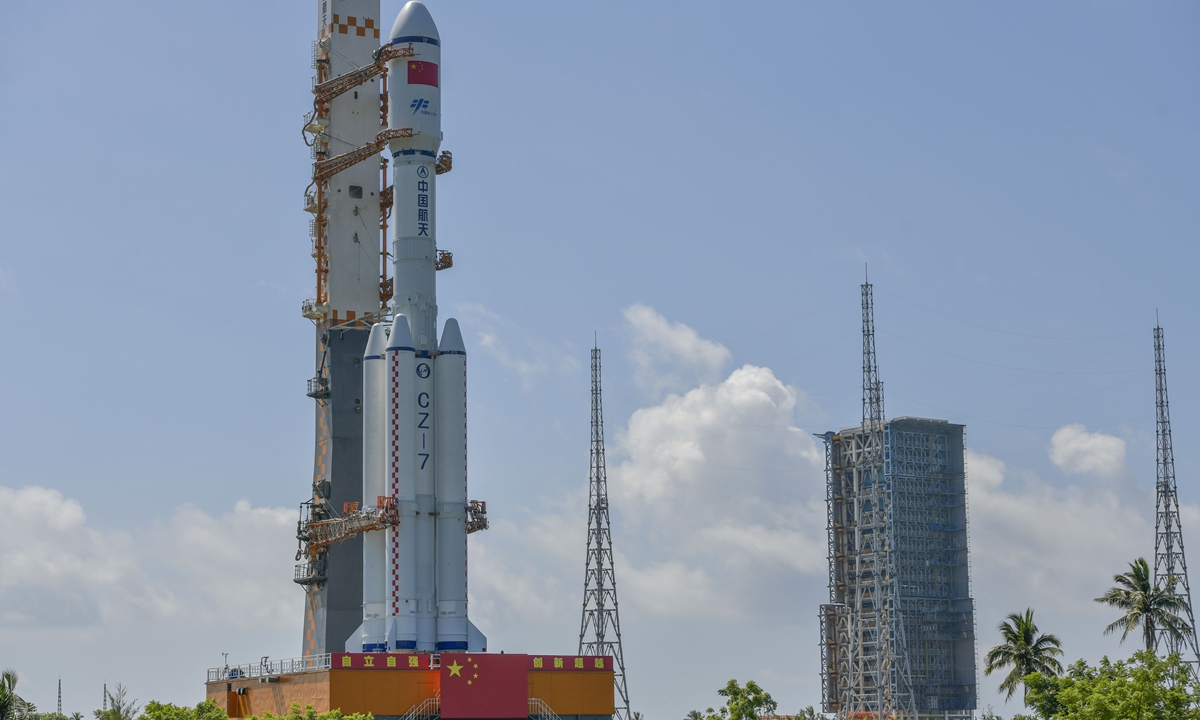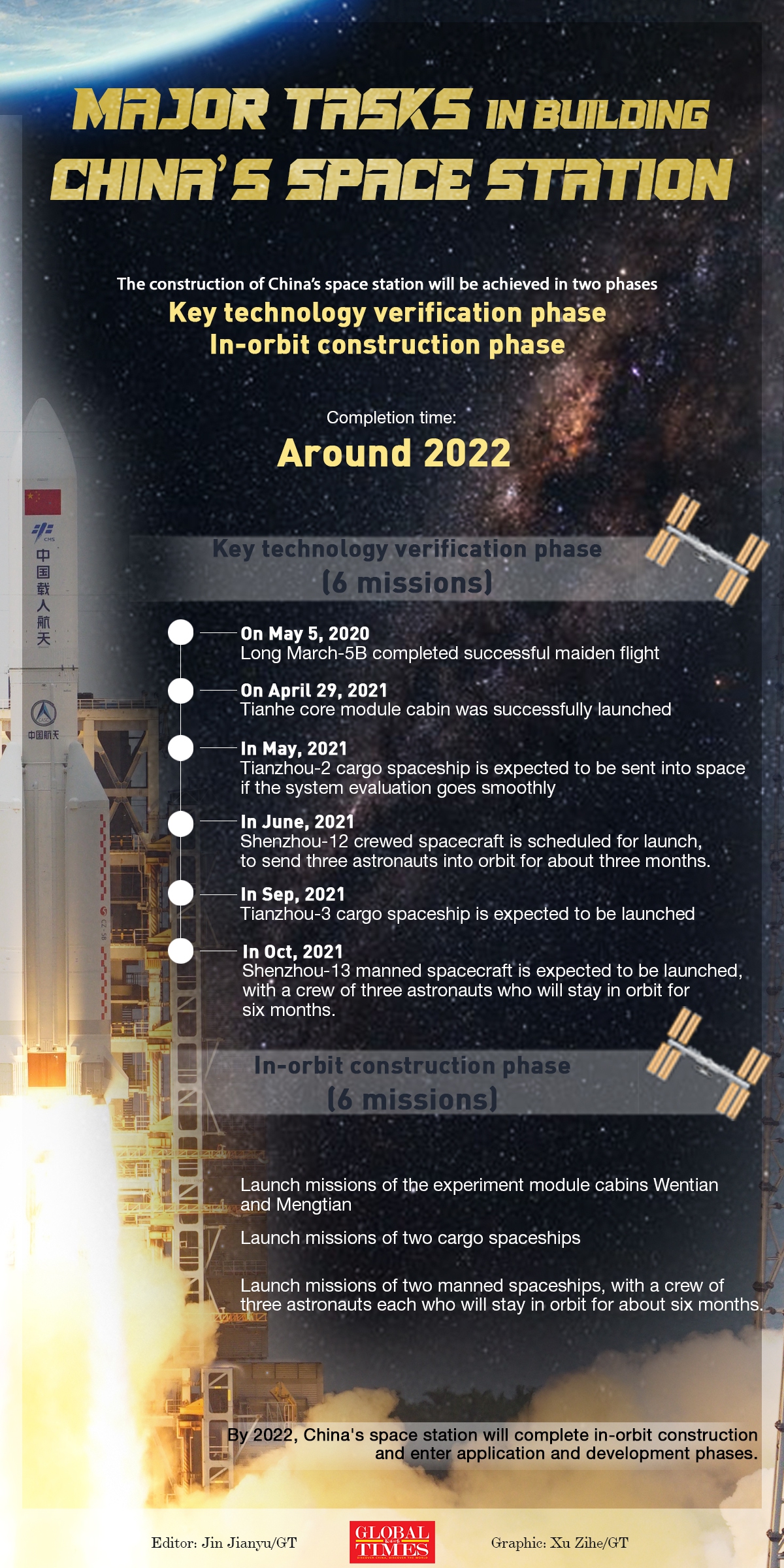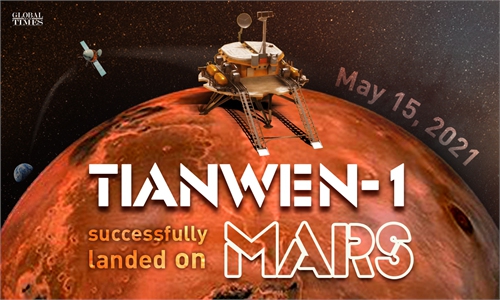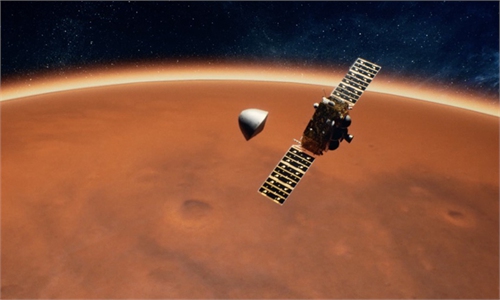
Photo taken on May 16, 2021 shows the combination of the Tianzhou-2 cargo spacecraft and the Long March-7 Y3 carrier rocket being transferred to the launching area of the Wenchang Spacecraft Launch Site in south China's Hainan Province. The facilities and equipment at the launch site are in good condition, while various pre-launch function checks and joint tests will be carried out as planned, according to the China Manned Space Agency. Photo: VCG
Following China's Tianwen-1's successful landing on Mars on Saturday, the fervor over China's space journey has yet to fade amid the rolling out of the Tianzhou-2 cargo spacecraft to the launch site, igniting another round of cheers for the upcoming mission to send the second section of China's space station into orbit after the first - the Tianhe core module cabin - was sent to space in late April.
The combination of the Tianzhou-2 cargo spacecraft and the Long March-7 Y3 carrier rocket was transported to the Wenchang Satellite Launch Center in South China's Hainan Province on Sunday, the Global Times learned from the China Manned Space Agency (CMSA).
The cargo spacecraft will load the necessities for astronauts, laboratory apparatus, and maintenance equipment, as well as bring power systems and propellants to fuel in-orbit spaceships, CMSA said on Monday.
According to the mission plan, CMSA said the Tianzhou-2 cargo spacecraft will carry consumables enough for three astronauts to live in orbit for three months, two sets of space suits, and platform materials.
It will conduct rendezvous and docking with the Tianhe core module cabin, refuel its propellant and then begin the combination flight.
The Tianzhou-2 cargo spacecraft is expected to be sent into space in late May to dock with the Tianhe core module if all goes as planned, and is expected to perform autonomous refueling and resupply operations, the Global Times learned from rocket developer, China's Academy of Launch Vehicle Technology (CALT) in April.
One of the key technologies that will be brought to space on board the cargo spacecraft is the urine processing and regenerative system, said Li Jiandong, senior engineer in charge of the system.
"As a major breakthrough in the recycling of water resources in space, it is a crucial step to enable the long-term stay for astronauts in orbit, which serves a key support role in the construction and operation of China's space station," a senior official at China Aerospace Science and Industry Corporation (CASIC) told the Global Times.
Six liters of urine can extract 5 liters of distilled water, and the maximum water production rate is 2.5 liters per hour, according to CASIC.
The water recycling system has greatly reduced the load of the cargo spacecraft, and considerably saved operating costs of the space station.
The Shenzhou-12 crewed spacecraft is scheduled for launch in June, sending three astronauts into orbit for about three months, during which the regenerative life support system and maintenance will be tested.
The Tianzhou-3 cargo craft will be launched in September, and the Shenzhou-13 crewed spaceship will follow in October, Hao Chun, director of CMSA said, China News reported on Sunday.
Following the Tianzhou-2's launch, another nine missions have been set for the busy construction of China's first-ever space station, which will be operational by 2022. Of the nine missions, two will be for modules, three for cargo spaceships and four for manned spaceships.

Major tasks in building China's space station. Graphic: Xu Zihe/GT


